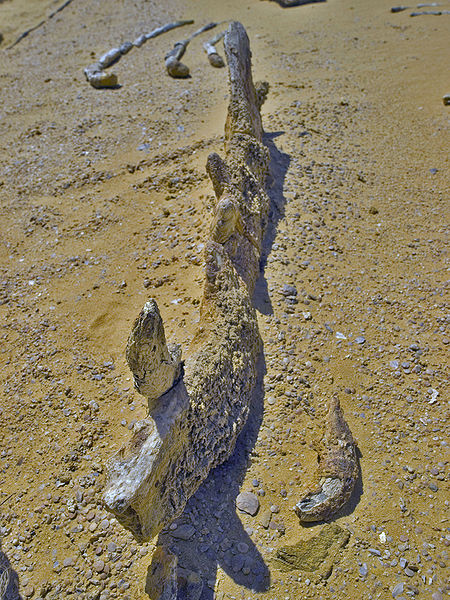
Photo credit: Tom Horton
When it comes to figuring out the ancient history of whales and dolphins, all we really have is their bones. Sometimes whole skeletons have been found, but more often it’s pieces or sections of bone here and there that provide clues to a larger puzzle. Most whale and dolphin fossils are found in sedimentary rock, layers of sediment that have built up throughout the ages protecting and preserving bones of animals from the past.
In order to determine the age of fossils, scientists use radiometric dating techniques on the rocks found adjacent to or surrounding the fossil. This is referred to as the absolute age of a fossil. Fossils are also placed within a relative timescale, referring to the epoch the fossil belongs to. According to the Encyclopedia of Marine Mammals this includes the “Eocene, Oligocene, Miocene, Pliocene and Pleistocene.” This places a fossil within a broader context and also helps add detail to each epoch.
For whale and dolphin fossils, skulls offer the best bet for establishing classification. Even with a stellar fossil, I do not envy the people who have to piece all these bits of information together and determine a classification system. This must require much patience and a knack for thinking within timescales of millions of years. I guess I will stick to planning my life for the next few weeks, seems like the best way to go.
We’ve been fossil hunting for approximatley 15 year and have yet to have any questions answerd regarding bones found in rock we have (3) 250lbs rocks with what appears to be vertabre bones approximately 4 in each one is Shale one is Limestone and one is PalosVerdes stone if i send you a picture can you identify them as to what kind of bone it is and what its from
Hi Pam, I’m not a fossil expert, but I know who is! I will send you the information via email.
Creative analysis – I was enlightened by the specifics – Does someone know where my assistant could possibly access a blank 1976 DD 271 form to work with ?